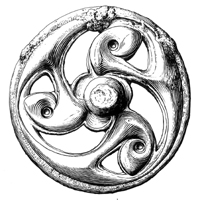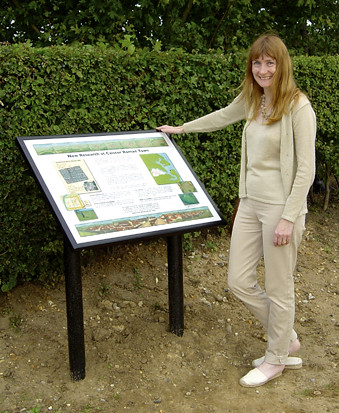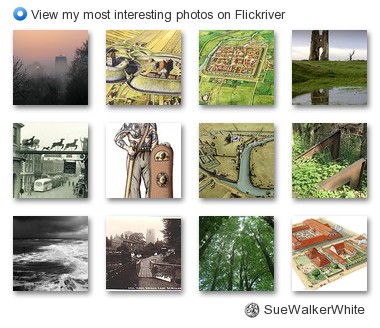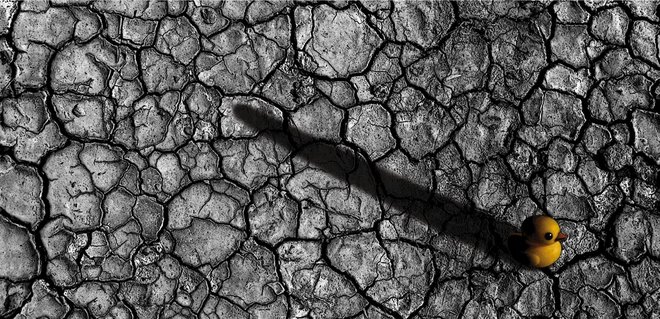Showing posts with label Norfolk. Show all posts
Showing posts with label Norfolk. Show all posts
Tuesday, 12 February 2013
Website Design
A new and very interesting development for me has been the creation of websites. I have just finished producing one for J. C. Walker Classic Motorcycle Engineering, you can visit it at www.4britbikes.co.uk
Friday, 30 December 2011
Capturing Our Wayland Heritage Project
At present I have just finished a 3 year project working as the Heritage Officer for the 'Capturing Our Wayland Heritage' based in Watton, Norfolk. To find out more about the project please visit http://wayland-heritage.blogspot.com/
Monday, 13 October 2008
Bringing Back the Brasses to Binham

 It has been wonderful to have the chance of bringing back brasses to the church at Binham, as part of the lottery funded Binham Priory Access & Conservation Project. The recreation of the four figures will bring back some of the faces of people from the history of the Priory church. On the nave floor close to the altar there are five indents where figure brasses have been removed. One of the brasses of a civilian man of about 1530 still survives but is not in situ, he was removed for safe keeping after his wife was stolen in the 1980s. Luckily a brass rubbing of the pair survives so we have an exact copy of what she looked like. From the outline of two of the other indents it is possible to tell that they were brasses of parish priests or monks.
It has been wonderful to have the chance of bringing back brasses to the church at Binham, as part of the lottery funded Binham Priory Access & Conservation Project. The recreation of the four figures will bring back some of the faces of people from the history of the Priory church. On the nave floor close to the altar there are five indents where figure brasses have been removed. One of the brasses of a civilian man of about 1530 still survives but is not in situ, he was removed for safe keeping after his wife was stolen in the 1980s. Luckily a brass rubbing of the pair survives so we have an exact copy of what she looked like. From the outline of two of the other indents it is possible to tell that they were brasses of parish priests or monks.Bringing back the lost images to the church as tactile brasses once more is a very interesting project. Reuniting the images of the couple from the 1530s has been very satisfying, and searching for close matches for the two ecclesiastical brasses has been a challenge. I found a good parallel for the brass of the head and shoulders indent at Binham, in the brass of a priest at near by South Creake church. I am very grateful to the Vicar of South Creak for his help and permission to take a rubbing of the brass.




A full length indent at Binham is very similar to that of a monk's brass in St Alban's Cathedral, as Binham Priory was the daughter house of St Albans Abbey and several monks from there moved to Binham, it seemed fitting to use the image. To get the brasses cast it was necessary to make scale drawings of the images (that of the monk is shown above), these where then photographically etched into thick zinc sheet, this was then used to make a mold to cast the brasses in.
 The four brasses form the main feature of a children's area, as an activity for young visitors, families and school groups. They were mounted on a specially designed wooden support fixed to the back of one of the Victorian pine pews. It is made to pull out to form a brass rubbing platform, and fold flat as a display when not in use. A set of four children's' 'Discovery Sheets' accompany the brasses, each one looks at aspects of the contemporary life they each would have known. The discovery sheets and plain paper for taking rubbing are housed in a purpose built holder on the side of the pew.
The four brasses form the main feature of a children's area, as an activity for young visitors, families and school groups. They were mounted on a specially designed wooden support fixed to the back of one of the Victorian pine pews. It is made to pull out to form a brass rubbing platform, and fold flat as a display when not in use. A set of four children's' 'Discovery Sheets' accompany the brasses, each one looks at aspects of the contemporary life they each would have known. The discovery sheets and plain paper for taking rubbing are housed in a purpose built holder on the side of the pew.The small finds from the excavations of the Priory in the 1930s include several sizable pieces of monumental brass. They were part of one or more decorative canopies that would have surrounded a large figure brass. I would date the design of canopy to around 1400. A recent find by Cliff and Sue Hudson has provided a clue to the type of figure brass that may have stood under the canopy. They have found the knee section of a brass of a Knight in armour, which is nearly life sized. This high quality brass memorial would have been set in a stone tomb slab on the floor of the Priory church, in front or close to the altar. It probably depicts one of the patrons of the Priory who was buried in the church with the expectation that the monks would be forever praying for his soul. Who could this knight have been?

 (Left) An illustration of the type of figure brass and canopy that was once in the church at Binham.
(Left) An illustration of the type of figure brass and canopy that was once in the church at Binham.(Below) The excavated brass canopy fragments. You can see more images
here http://www.flickr.com/photos/suewhite/sets/72157603909944709/
Labels:
© Sue White,
Binham,
Brasses,
Church,
Commission,
Interpretation,
memorial,
Norfolk,
Priory
Wednesday, 9 July 2008
Caistor Roman Town Reconstruction Painting
 Watercolour reconstruction painting of the central area of the Roman town at Caistor St Edmund, a few miles south of Norwich, Norfolk. The illustration was commissioned by the Norfolk Archaeological Trust.
Watercolour reconstruction painting of the central area of the Roman town at Caistor St Edmund, a few miles south of Norwich, Norfolk. The illustration was commissioned by the Norfolk Archaeological Trust.
Tuesday, 8 July 2008
Gayton Thorpe, Norfolk. Reconstruction of Roman Villa.

I have just revisited an earlier reconstruction I created as a black and white line drawing and added colour to it, for it to be used in the new displays in the Boudica gallery in Norwich Castle Museum.
Labels:
© Sue White,
Gayton Thorpe Villa,
Illustration,
Norfolk,
Reconstruction,
Roman
Friday, 21 March 2008
St Benet's Abbey Guidebook Launched
 The new guidebook for St Benet's Abbey was launched this week by the Bishop of Norwich, it will sell for £3.50. It was written by Tim Pestell and published by the Norfolk Archaeological Trust, who commissioned me to create a reconstruction painting of the Abbey.
The new guidebook for St Benet's Abbey was launched this week by the Bishop of Norwich, it will sell for £3.50. It was written by Tim Pestell and published by the Norfolk Archaeological Trust, who commissioned me to create a reconstruction painting of the Abbey.
The book launch took place in the vestry of Norfolk Cathedral. The vestry has two walls panelled with carved oak panelling that came from the Abbey after it pass into the ownership of the Bishop of Norwich in 1536. The panels were originally in the Bishop's Palace and were later moved into the vestry. The carvings are not of religious figures but secular classical characters including Julius Caesar, Alexander the Great and Penelope the wife of hero Odysseus. The carvings show the characters in the fashions of the 1530s, the bottom panels are a fine example of the 'linen-fold' style of panel carving. One of the panels has the carved arms of St Benet's Abbey.
The first step of creating the reconstruction painting for the guidebook was to chose the angle of view that would be most useful to a visitor to the site. As visitors from land and water will be entering the site close to the gatehouse/windmill I chose that area as the foreground for the painting. The next thing to do was to find an ariel view of the site from that direction, we are lucky in Norfolk to have two wonderful collection of photographs taken by Derek Edwards that is housed in the Landscape Archaeology Section at Gressenhall and those taken by Mike Page an independent photographer (there is a link to his website on this page). The photograph I used as a base was one of Derek Edwards. I then collected all the other available information from different sources including the detailed earthwork survey that was produced by the Royal Commission and a geophys survey. Ariel photographs of the Abbey taken over the years showed crop-marks in the grass, these all added to the detailed evidence of the buildings that once stood on the site. There were also early photographs, engravings and drawings in the counties public collections and the British Library that showed some of the buildings and features that have now disappeared. Working with Tim Pestell and Stephen Heywood we pulled the evidence together and I drew the reconstruction, the result is show below.

Wednesday, 29 August 2007
Warham Camp, Iron Age Fort
 Warham Camp is one of my favorite archaeological and wildlife sites. The grassy ramparts of the fort form a rare chalk downland habitat for Norfolk. The flora is wonderful wild thyme, hair bell and rock rose are some of the miniature marvels to be found there.
Warham Camp is one of my favorite archaeological and wildlife sites. The grassy ramparts of the fort form a rare chalk downland habitat for Norfolk. The flora is wonderful wild thyme, hair bell and rock rose are some of the miniature marvels to be found there.At the moment the south side of the inner ramparts are suffering very badly from to many rabbits burrowing into them. The interpretation panel I produced over 10 years ago has not faded and is still doing its job.
Thursday, 21 December 2006
Illustration on BBC's Unearthing Mysteries Web Page

In the new series of Radio 4's Unearthing Mysteries Aubrey Manning visits Norwich Castle Museum to hear about Prastagus the husband of Boadica, Queen of the Iceni. My pen and ink drawing of a coin of Prastagus was used to illustrate the supporting BBC web page. It is the only known image of the Iceni King. Listen to the programme on http://www.bbc.co.uk/radio4/science/une

Labels:
© Sue White,
BBC,
Boudica,
Illustration,
Iron Age,
Norfolk,
Prasutagus,
Reconstruction
Subscribe to:
Posts (Atom)






